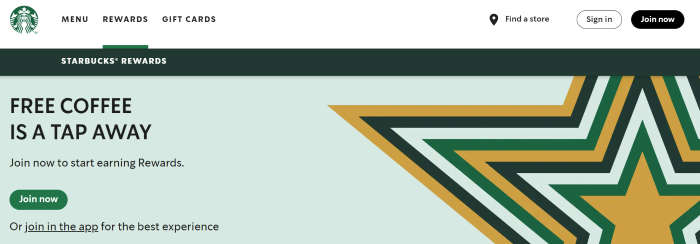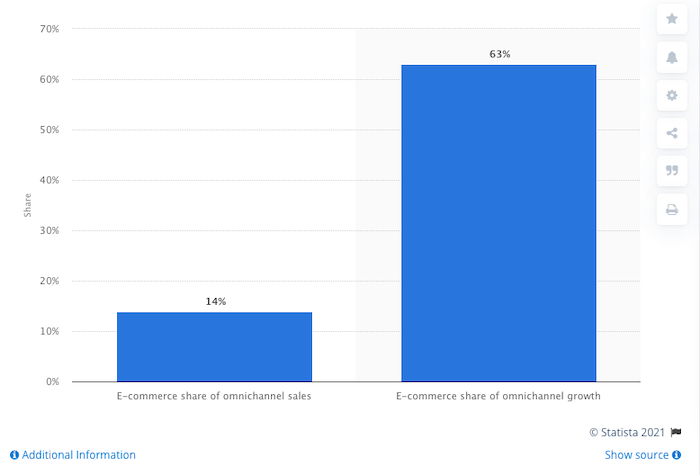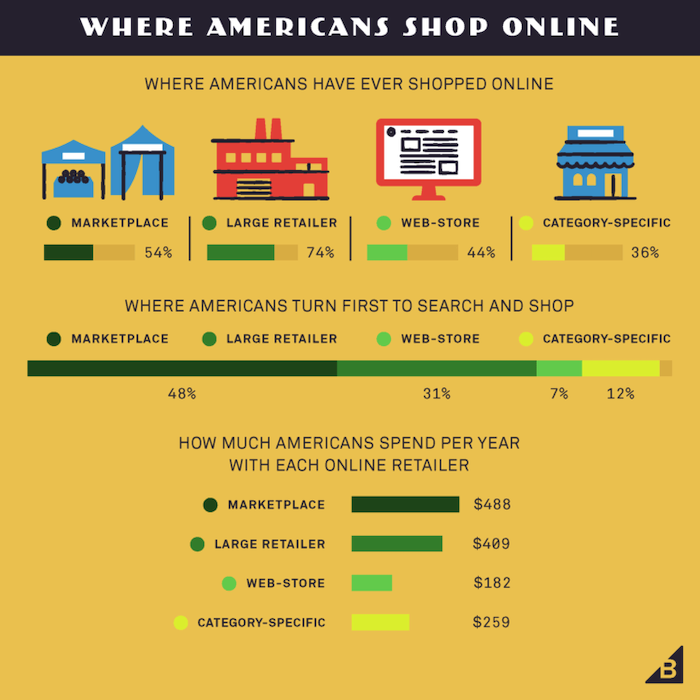Marketing used to be a lot less complicated. Today, users interact with brands on multiple devices and separate platforms—often simultaneously. Even in-person and online shopping, which used to be distinct events, are no longer completely separate due to the rise of trends like buy-online-pick-up-in-person. Consumer expectations are shifting as well. Today’s customers expect to receive … Continue reading Omnichannel Marketing: How You Can Use it to Reach More People Than Ever Before
Tag: Omnichannel
Omnichannel Marketing: How You Can Use it to Reach More People Than Ever Before
Marketing used to be a lot less complicated.
Today, users interact with brands on multiple devices and separate platforms—often simultaneously. Even in-person and online shopping, which used to be distinct events, are no longer completely separate due to the rise of trends like buy-online-pick-up-in-person.
Consumer expectations are shifting as well.
Today’s customers expect to receive the same service and brand experience whether they’re scrolling Facebook, reading their email, or shopping in a store.
How do you give your customers what they want and deliver a better experience? With omnichannel marketing.
What Is Omnichannel Marketing?
Omnichannel marketing provides users with a seamless marketing experience across all platforms, channels, and devices throughout the marketing funnel. The core goal of omnichannel marketing is to place the customer at the center of all marketing strategies and provide a consistent, seamless experience.
Omnichannel marketing is growing in popularity, with 67 percent of e-commerce companies saying omnichannel is “very” or “quite” important to their business.
While implementation of an omnichannel strategy can vary between businesses, it can be identified by key goals, including:
- personalized content and ads informed by past interactions with specific users
- consistent branding, tone, and vision across all platforms
- allowing users to continue their purchase path seamlessly, even if they switch platforms or devices
Benefits of Omnichannel Marketing
When implemented correctly, omnichannel marketing offers a host of benefits for both brands and their customers. According to Invesp, companies using omnichannel strategies retain 89 percent of their customers, while brands that don’t keep just 33 percent of their customers.
Several other benefits include:
- Improved user experience: Omnichannel marketing centers the customer experience, providing a better experience for customers no matter where they interact with your brand.
- Better brand awareness: Creating a consistent experience across platforms (including in-store) makes it easier for customers to recognize your brand.
- Improved business data: Omnichannel tracks interactions across platforms, channels, and even in-person sales. This highlights which campaigns (and channels) are most effective at driving leads and sales.
- Increased sales and revenue: Marketers that use three or more channels in one campaign see a 287 percent higher purchase rate. Omnichannel campaigns also have a higher order rate.
Examples of Omnichannel Marketing
Today, most brands realize customers engage with them on multiple channels. However, implementing an omnichannel strategy can feel overwhelming. Let’s look at a few brands that are getting it right.
Starbucks
Starbucks is more than just an in-person coffee shop and remote working haven.
They also offer online ordering through their mobile rewards app. Customers can upload money to the app, place curb-side orders, and even claim rewards.

How do they improve omnichannel with their app?
First, Starbucks offers rewards to app users, which encourages them to use the app. The app regularly pushes special rewards, such as earning extra points for ordering in the next two days or trying a new drink.
When customers use the app, it allows Starbucks to track in-store behavior—data they wouldn’t have access to otherwise. The app then offers recommendations and promotes seasonal drinks to drive sales.
Disney
Disney is a pioneer in omnichannel marketing. The brand has expertly navigated combining in-person, online, and television marketing for decades.
The brand’s omnichannel marketing really stands out in its My Disney Experience platform for visiting their park. Users can access the tool via app or browser and buy tickets, book hotels, reserve restaurants, schedule activities, coordinate with other users, and even store photos they take at the park.
Once users arrive at the park, the built-in GPS helps them find locations in the park, see real-time wait times at rides, and access the Disney MagicPass, a contactless version of the MagicBand. The app also promotes discounts, like 25 percent off hotel stays for Disney+ subscribers.
Providing a seamless experience from online to in-person helps make customers’ Disney adventure even more magical.
Warby Parker
Warby Parker, a well-known eye-glass company, was originally only available online. In recent years, they began to leverage omnichannel marketing. In addition to allowing customers to order up to five pairs of glasses to try on at home (one of their most popular offers,) they now have many brick-and-mortar stores.

However, they didn’t just create stores to sell more glasses—they’re committed to combining data from in-person interactions and online interactions. Warby Parker co-founder Dave Gilboa shared:
“We really focused on providing a great online experience but an offline as well. We have 70 stores and we’ll have 90 by the end of the year. We can see a clear path to several hundred stores in addition to a thriving ecommerce business.”
How does it work? Customers can favorite frames on the app, which in-store associates can then access to help them complete the purchase in person.
Shoppers can also try on glasses in the store and take a photo, which is converted into a link and sent to their email to complete the purchase online.
Omnichannel Marketing Strategies
Omnichannel marketing allows businesses to deliver the right message to the right customer at the right moment, driving sales, increasing customer loyalty, and providing a better customer experience.
Getting it right is no easy task. Here are five steps to building a better omnichannel strategy.
Map the Customer Journey
Omnichannel marketing creates a seamless customer journey. To do that, you need to understand the path your customers take when making a purchase.
Creating a customer journey map helps you better understand where customers interact with your brand, provides insights into their pain points, and makes it easier to create an effective omnichannel marketing strategy.
Here’s how to create your map:
- Identify your customers: Identity who your customers are, where they live, and other demographic information. Look in your CRM or use a current buyer persona.
- Understand their pain points: What drives your customers to make a purchase? What challenges do they want to solve?
- Find out where they hang out: What platforms do your customers use during the purchase process?
- Track the path of conversion: How do most of your customers convert? Keep in mind their path is unlikely to be straight. They might visit your in-store and then convert online, or view your Instagram reels and then visit your store. Aim to define the most common paths.
Once you’ve created your customer journey map, look at your conversion tracking data to find areas where customers are dropping off. Depending on how you track, this might be in Google Analytics or your sales platform. Customer satisfaction surveys may also provide insights.
Create a Consistent Brand Presence
Creating a consistent brand presence is a small part of omnichannel marketing, but it is crucial. Make sure all platforms use similar branding, tone, colors, and marketing messages.
Next, look at customer surveys (or create one!) and reviews to find out where customers aren’t happy. For example, you might find your website is too hard to use or your app is glitchy. Users might open every email you send but never engage on social media.
Once you see where your message doesn’t resonate, make plans to improve it. Does your audience prefer a different format, or more helpful content?
Remember, the goal is to be consistent, not identical. For example, your website might offer live chat—that doesn’t mean your social media channels need it, too. Instead, make sure the information, including things like what is in stock, is consistent where it is available. You don’t want a customer to see something is in-stock online and then show up to the store to find it is sold out.
Use Omnichannel to Increase Personalization
A report by Segment found that 71 percent of consumers feel frustrated when their shopping experience is impersonal. Even more striking, 91 percent of customers are more likely to shop with brands that deliver personally relevant offers and recommendations.
You can’t ignore personalization—it’s increasingly popular and customers expect it. Luckily, omnichannel marketing can help you leverage the strategy more effectively.
Personalization is the key to a successful omnichannel strategy, but it’s about a lot more than using the name tag in your email marketing. Rather, omnichannel marketing leverages data about customers to deliver ultra-relevant marketing messages at just the right time.
What does omnichannel personalization look like? While it can vary by brand and industry, here are a few examples:
- A customer adds an item to their cart, but they don’t check out. Later, you send an email with a link to their cart, a discount, and a reminder to complete their purchase.
- Using segmentation, you email different product recommendations to customers who purchase children’s clothing versus adult workout clothing.
- A customer tells an e-commerce chatbot what types of cleaning products they are interested in. Later, a customized popup promotes a special on the products that the customer is interested in.
Omnichannel personalization takes personalization to the next level by delivering relevant messages across platforms.
Leverage Technology to Automation Omnichannel
Omnichannel marketing requires gathering and leveraging data—and developing different funnel paths for different types of customers. The problem is most marketing teams don’t have the time to manage this process manually.
Omnichannel marketing tools make it easier to gather and leverage data to build a better user experience. Your stack will vary by channel, industry, and the size of your company, but there are a few key platforms to consider.
- Data collection: Omnichannel marketing uses data to understand customers’ paths and deliver a better experience. If you don’t have Google Analytics 4 set up, now is the time. Consider using a BI tool like Power BI or Google Data Studio to analyze data and create reports.
- Marketing automation: Whether you want to engage more on social media, send scheduled emails, or move users through the conversion process, you need marketing automation tools to build an effective omnichannel marketing strategy. Many tools you already use, like email marketing, CRMs, and social media management, have built-in automation features. I also recommend a tool like Zapier to build custom triggers.
- Chatbot automation: Want to be there for your customers even in the middle of the night? A well-designed chatbot script can answer questions, deliver resources, and qualify leads while you sleep.
- Segmentation platform: One of the key benefits of omnichannel marketing is the ability to offer a more personalized experience. To do that, you have to segment your audience. Depending on your industry, this might mean using dynamic landing pages or a tool like Omnisend to send more personalized emails, pop-ups, and even push notifications.
Test and Optimize Your Omnichannel Campaigns
Building an omnichannel strategy isn’t a one-time endeavor. To be effective, you must constantly test, retest, and tweak your strategy. Over time consumer behaviors change, and you need to be ready.
The segmentation tools I mentioned in the previous section often offer testing features, or you can use Google’s Optimize or Optimizely to test audiences, content, landing pages, and even button color changes.
If you’re new to testing, this guide to A/B testing will get you started. It can feel overwhelming at first, but I think you’ll uncover really interesting data if you stick with it. Testing and optimizing drive ROI, so you’ll build a better campaign.
Omnichannel Marketing Frequently Asked Questions
What are the benefits of an omnichannel marketing strategy?
Omnichannel marketing provides a better user experience, increases retention rates, improves data collection, and makes connecting online and offline experiences easier. Together, all those benefits drive sales and ROI.
What is the difference between multichannel marketing and omnichannel marketing?
The biggest difference is that omnichannel marketing focuses on improving the customer experience, while multichannel marketing focuses on increasing customer engagement. Omnichannel also recognizes that customers may use multiple channels simultaneously.
What are the best omnichannel marketing tools?
The main tools you’ll need to implement omnichannel marketing are tools for all the channels your users engage on, like email, SMS, or social media. Automation tools, including chatbots, are also highly effective for omnichannel marketing. Finally, you need a robust analytics program, like Google Analytics 4, to track user interactions on both the web and apps.
What is an example of omnichannel marketing?
One of the best examples of omnichannel marketing is Starbucks’ reward app, which allows them to track in-person interactions, send personalized recommendations, and increase customer engagement.
Omnichannel Marketing Conclusion
The future of marketing is connected. Unlike multichannel marketing, which seeks to push out similar messages on multiple channels, omnichannel marketing focuses on bringing experiences together into a seamless experience that customers love.
Before you get started, make sure you understand who your customers are and look for marketing automation tools that will help you build a stronger omnichannel campaign.
Are you using omnichannel marketing? What challenges are you facing?
How to Run an Omnichannel E-Commerce Marketing Campaign
Think back to the last time you made a big online purchase. If you’re like most consumers, there’s a good chance you interacted with the brand multiple times on different channels using different devices before you paid.
The customer journey isn’t straightforward anymore (if it ever was). It’s a meandering path where customers visit brands on different platforms before converting. To successfully target and convert consumers across every channel and platform, you need a unified marketing strategy. That’s the crux of an omnichannel e-commerce marketing campaign.
This article walks you through precisely what omnichannel e-commerce looks like, why it is crucial for e-commerce brands, and how you can create your own killer omnichannel e-commerce marketing campaign.
What Is Omnichannel E-commerce?
Omnichannel e-commerce is a marketing approach that creates a unified customer experience across multiple platforms. Specifically, omnichannel retailers deliver the same experience across every channel and create a seamless experience that transcends individual platforms.
This is different from multichannel e-commerce, where brands sell across different channels but offer different experiences. While consumers may be able to shop on social media, a website, and a brick-and-mortar store, they can’t move seamlessly between them.
There is one other form of commerce: single-channel e-commerce. This is when brands only sell through one channel. That could be a traditional store, an online shop or a marketplace like Amazon. This approach limits brands to just one platform, which can be devastating if that platform makes changes.
With omnichannel e-commerce, customers hop from device to device, or platform to platform during the conversion process. As a brand, you need to keep up.
Why Is an Omnichannel E-commerce Strategy Important?
An omnichannel e-commerce experience sounds better than a multichannel or single-channel experience, right?
That’s reason enough to adopt an omnichannel approach, but it’s not the only reason you should. Omnichannel e-commerce provides a better customer experience and allows your brand to take advantage of new platforms, increase customer retention rates, and boost sales.
Omnichannel E-Commerce Strategies Provide a Better Customer Experience
Google reports that 85 percent of online shoppers start the purchase process on one device and finish it on another. Why does that matter?
Convenience rules when it comes to e-commerce; just ask Amazon. It’s not enough to offer a great selection, competitive pricing, and next-day delivery, however. Brands must show up where their customers are and offer a seamless experience when they switch devices or channels.
Take off your marketer’s cap for a second and remember that most consumers don’t view their shopping experience as separated. It’s all one journey to them, and that’s exactly how an omnichannel e-commerce experience approaches it.
As you can see from the infographic by Invesp below, customers can use an omnichannel experience in several different ways. They can:
- check the availability of products
- reserve or buy items and pick them up in-store
- have constant access to their profile information
- enjoy a personalized shopping experience regardless of platform

Omnichannel Is the Future of E-commerce
Want to future-proof your brand? Omnichannel is the way to go. Statista found e-commerce accounted for 14 percent of omnichannel sales in 2019, but it accounted for a whopping 63 percent of omnichannel growth—which means omnichannel is growing fast.

According to BigCommerce’s Omnichannel Retail report, consumers shop fairly evenly between different online stores, even though the bulk of spending happens on marketplaces like Amazon and large retailers.

Increase Customer Retention Rates and Sales
An omnichannel marketing strategy isn’t just good for customers; it can be incredibly profitable.
Customers keep coming back to stores that offer an omnichannel approach. A survey by Aspect Software finds organizations that leverage an omnichannel strategy see 91 percent better year-over-year customer retention rates than businesses that don’t. If you’re serious about generating repeat online sales, omnichannel marketing is the way to go.
Omnichannel customers are better customers in the long run, too. IDC finds these consumers have a 30 percent higher lifetime value than single-channel shoppers.
Research also shows 47 percent of shoppers who engage with brands on 10 or more channels purchase from their favorite brands at least once a week. That’s compared to 21 percent of shoppers who engage across one to four channels.
8 Tips for Building a Successful Omnichannel E-commerce Marketing Campaign
Omnichannel e-commerce marketing is essential for brick-and-mortar or digitally native brands that want to drive more e-commerce traffic and increase e-commerce sales in the years ahead.
Here’s what it takes to run a successful campaign.
Identify Each Channel’s Opportunities
Every channel is important in an omnichannel e-commerce strategy, but they play different roles. Begin by identifying where your customers spend the most time, how they interact with these channels, and the types of products they normally buy there.
Some channels are more suited to advertising particular products, while others may be better for customer service. For example, an enterprise software company probably won’t get many direct conversions from Twitter, but they can still engage prospective customers there.
Keep in mind, your omnichannel strategy shouldn’t include every single marketing platform. If none of your customers use TikTok, there’s no point creating a presence there. Omnichannel should focus on the channels your customers use.
Understand Your Customer’s Needs
An omnichannel approach should put your customers front and center. Every business likes to think they know their customers, but how much do you really know about them? Now is the time to find out.
Think about the channels where your customers hang out. What content do they like to see on those channels? When are they most likely to convert? These are the questions you have to answer.
You can use data to understand how customers interact with your brands across each channel, but don’t be afraid to speak with them directly through surveys and polls. This may help you uncover things you didn’t know about the buyer’s journey.
Personalize Ads and Messages
Customers expect more than an omnichannel experience; they expect personalization at every touchpoint on every channel. They want to land on your website and see the products they frequently buy. They expect the emails in their inbox to contain offers and marketing messages relevant to them.
The trouble is, 67 percent of marketers are not providing customers with contextual, personalized messages.
You don’t need to personalize your messaging for every individual customer, however. Instead, segment your audience into smaller groups that have the same traits. These traits can include:
- demographics
- shopping patterns
- favorite channels
- favorite products
- spending amounts
Personalization strategies can even be implemented in stores. It may be a little more complicated recommending related products online, but setting up kiosks or equipping shopping assistants with mobile devices can help bring the online experience in-store.
Keep Your Brand Voice Consistent
Apple, Nike, Wendy’s; there are some companies with instantly recognizable brand voices. Why? Because they have an unfailing commitment to maintaining consistency across every channel.
It doesn’t matter if you see an Apple ad on TV or in print, read the copy on their website, or even watch one of their product launches. The language and tone of voice are exactly the same. That’s the secret to developing a great omnichannel e-commerce marketing strategy. The more consistent your messaging and tone of voice are, the less likely consumers are to get confused and fall out of your marketing funnel.
At the same time, they’ll find your message much more engaging. It’s one thing to be hit with a promotional message in an email. It’s another thing to see that same message on social media, your website, and in-store.
Your promotional strategies should also be consistent. It’s not an omnichannel marketing strategy if you’re running separate promotions in-store and online and aren’t allowing either shopper to use the other channels’ promotions.
Make Each Channel and Touchpoint Shoppable
With an omnichannel experience, customers should be able to purchase wherever they interact with your brand. Your online and brick-and-mortar stores are a given, but can they make purchases on social media channels or your app?
This wasn’t possible a couple of years ago. Thanks to some pretty significant updates on the major social media platforms, it is now possible to drive sales through Instagram, Facebook, and Pinterest.
Don’t stop there, though. Consider expanding your reach to marketplaces like Amazon and Etsy, if appropriate. As we saw in the breakdown of omnichannel e-commerce spending above, marketplaces have the second-largest share of shoppers and drive the most sales.
Sure, in an ideal world, it’s better if customers buy your products on your own website. But having customers purchase on Amazon allows you to engage with them and bring them to your website.
Keep Testing and Gathering Data
Your omnichannel e-commerce marketing campaign will need to evolve over time. Consumer habits change, new channels emerge, and existing platforms become less important. That’s why gathering data and continuing to test and refine your campaign is so important.
More data allows you to better optimize your campaign, and, ultimately, be more successful. Test your campaign as a whole and run live A/B tests on your personalized messaging to each customer segment. Tweaking headlines, body copy, and images can dramatically improve engagement and conversion rates.
Back It Up in the Back Office
There’s no point in developing a killer omnichannel marketing campaign if your backend operations can’t follow through on your promise.
Specifically, inventory visibility and management should be top of the list. Use an inventory management system that centralizes inventory across warehouses and physical storefronts, so no customer orders an out-of-stock product.
Shipping, fulfillment and returns are also important. Customers should have the ability to purchase their products in several ways, whether that’s having purchases delivered to their door or picking them up from their nearest store. The same goes for returns. In-store and online returns are essential components of a true omnichannel approach.
Conclusion
Omnichannel marketing for e-commerce stores is becoming the norm. Customers expect a seamless experience when switching between devices and channels, and it’s your responsibility to deliver it.
Omnichannel marketing significantly improves the customer experience, but it also drives better engagement, creates better customers, and leads to more sales. That puts it up there with some of the biggest factors of e-commerce success.
If you want to succeed with e-commerce, omnichannel marketing isn’t a strategy; it’s a requirement.
Want help setting up your marketing campaigns to align with your omnichannel e-commerce strategy? Let us know and our agency can help.
Which are the most important channels for your omnichannel e-commerce marketing campaign?


